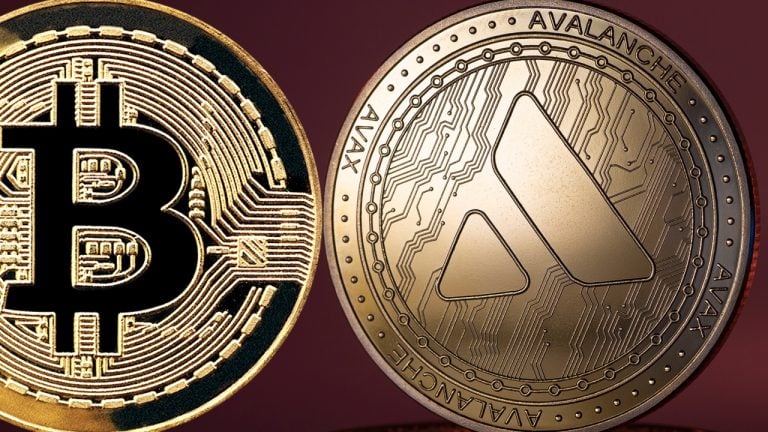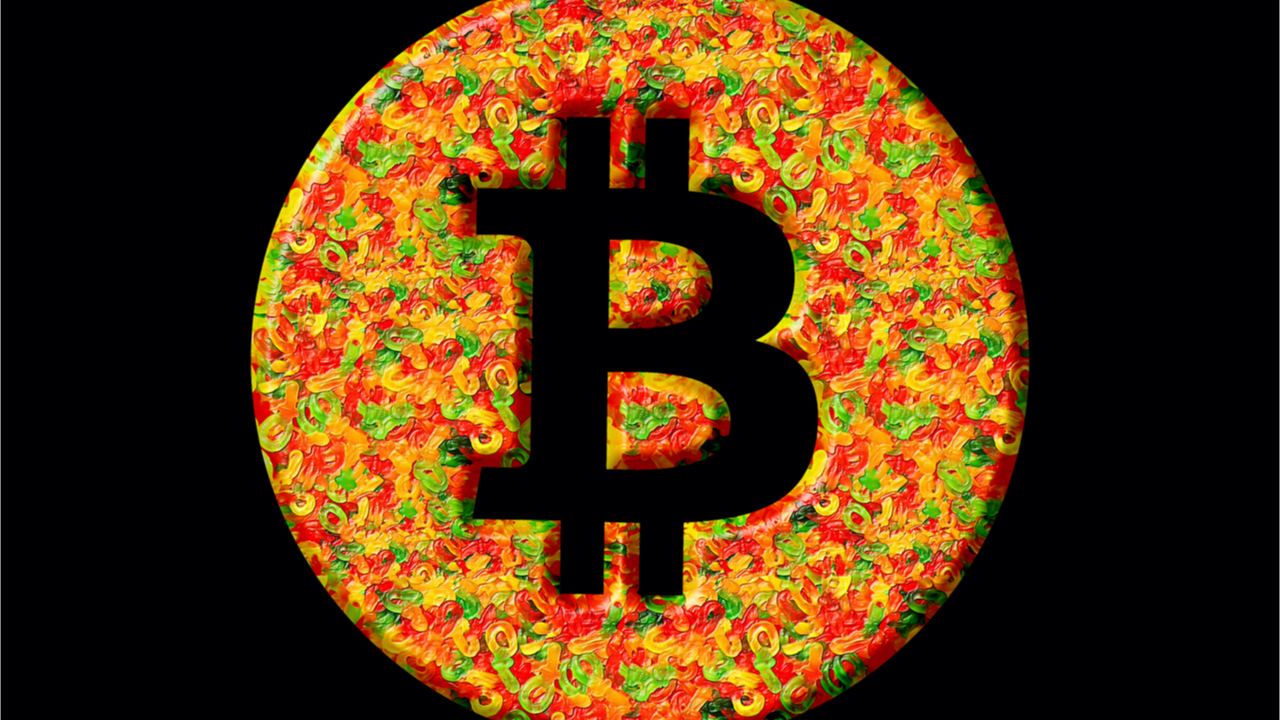 This year, there has been a flurry of news reports and opinion editorials discussing an alleged de-dollarization trend amid a wave of disclosures associated with the BRICS bloc. In a recent article, the American political scientist and author Ian Bremmer insisted that claims of the U.S. dollar dying are overblown. In addition to Bremmer’s comments, […]
This year, there has been a flurry of news reports and opinion editorials discussing an alleged de-dollarization trend amid a wave of disclosures associated with the BRICS bloc. In a recent article, the American political scientist and author Ian Bremmer insisted that claims of the U.S. dollar dying are overblown. In addition to Bremmer’s comments, […] According to statistics, the number of bitcoin bridged to the Avalanche blockchain saw a significant inflow on March 2, as more than 2,000 bitcoin were bridged on that day. Data further shows that as of Friday, March 3, a total of 8,504 bitcoin worth $190.9 million was bridged over to the Avalanche network. Bitcoin Bridged […]
According to statistics, the number of bitcoin bridged to the Avalanche blockchain saw a significant inflow on March 2, as more than 2,000 bitcoin were bridged on that day. Data further shows that as of Friday, March 3, a total of 8,504 bitcoin worth $190.9 million was bridged over to the Avalanche network. Bitcoin Bridged […]
According to the crypto exchange, 7,026 FTX Japan account holders had moved funds from the firm to Liquid Global — a requirement in order to withdraw assets.
Bankrupt crypto firm FTX’s subsidiary in Japan has reported thousands moved from the exchange since resuming withdrawals on Feb. 21.
In a Feb. 22 announcement, FTX Japan said users of the exchange and those at Liquid Global had withdrawn roughly 6.6 billion yen — $50 million at the time of publication — in cryptocurrency and fiat. According to the crypto firm, 7,026 account holders had moved funds from FTX Japan to Liquid and there were 5,697 transactions involving cryptocurrencies and 1,947 instances of users withdrawing fiat.
The crypto firm said on Feb. 20 in order to process withdrawals, FTX Japan users would need to confirm their account balances and transfer them to a Liquid account. Withdrawals resumed at 12:00 PM JST on Feb. 21 for the first time in more than three months.
FTX Japan had been part of its parent company’s proceeding in filing for bankruptcy in November 2022, when the firm froze assets for roughly 9 million users, removing access to millions of dollars. An NHK report at the time said that FTX Japan had roughly 19.6 billion yen in cash — more than $138 million — when it ceased operations, suggesting that there may be roughly $90 million left for users as of Feb. 22.
「出金・出庫サービスの進捗状況について」を掲載致しました。こちらをご確認ください。https://t.co/dtGj9C0PLV
— FTX Japan (@FTX_JP) February 22, 2023
Related: Unsealed superseding indictment against Sam Bankman-Fried includes 12 criminal charges
Due to bankruptcy proceedings in the United States, most FTX users, including those at FTX US, have been unable to withdraw their assets since November. The case is moving forward in U.S. Bankruptcy Court for the District of Delaware, in which the judge denied a motion to appoint an independent examiner, citing the expense involved.
 On Friday, the Web3 wallet firm Metamask, a subsidiary of the Ethereum-centric company Consensys, announced the beta launch of ethereum staking features will be made available via Lido’s or Rocketpool’s liquid staking services. Users who want to stake ethereum and earn staking rewards can select one of the staking providers within the Metamask Web3 wallet’s […]
On Friday, the Web3 wallet firm Metamask, a subsidiary of the Ethereum-centric company Consensys, announced the beta launch of ethereum staking features will be made available via Lido’s or Rocketpool’s liquid staking services. Users who want to stake ethereum and earn staking rewards can select one of the staking providers within the Metamask Web3 wallet’s […]
Bears are better positioned for Friday’s $600 million BTC options expiry, but bulls can flip the tables if Bitcoin price trades above $18,000.
No one can blame Bitcoin (BTC) bulls for placing bets at $20,000 and higher for the $600 million weekly options expiry on Nov. 18. After all, this level had provided a solid resistance since Oct. 25 and held for almost two weeks.
However, the base scenario changed abruptly on Nov. 8 after a liquidity crisis halted withdrawals on the FTX exchange. The movement surprised traders and over a 48-hour timespan, over $290 million in leverage buyers were liquidated.

The market quickly adjusted to the news, ranging from $15,800 to $17,800 for the past seven days. At the moment, investors are afraid that contagion risks might force other key players to sell their cryptocurrency positions.
FTX held significant deposits from key industry players, so its demise meant other participants would also face substantial losses. For example, BlockFi held a $400 million credit line with FTX US. On Nov. 15, collateralized yield platform SALT disclosed significant losses from the FTX collapse and subsequently halted withdrawals.
Similar events happened at the Japanese cryptocurrency exchange Liquid, increasing the uncertainty level in the entire market.
The Nov. 18 options expiry is especially relevant because Bitcoin bears can secure a $120 million profit by suppressing BTC below $16,500.
The open interest for the Nov. 18 weekly options expiry is $600 million, but the actual figure will be lower since bulls were overly-optimistic. These traders missed the mark, placing bearish bets at $18,000 and higher, while BTC was dumped following the FTX insolvency.

The 1.00 call-to-put ratio shows the perfect balance between the $300 million put (sell) open interest and the $300 million call (buy) options. Nevertheless, as Bitcoin stands near $16,500, most bullish bets will become worthless.
If Bitcoin's price remains below $17,500 at 8:00 am UTC on Oct. 21, only 10% of these call (buy) options will be available. This difference happens because a right to buy Bitcoin at $18,000 or $19,000 is worthless if BTC trades below the expiry price.
Below are the four most likely scenarios based on the current price action. The number of Bitcoin options contracts available on Nov. 18 for call (bull) and put (bear) instruments varies, depending on the expiry price. The imbalance favoring each side constitutes the theoretical profit:
This crude estimate considers the put options used in bearish bets and the call options exclusively in neutral-to-bullish trades. Even so, this oversimplification disregards more complex investment strategies.
For example, a trader could have sold a put option, effectively gaining positive exposure to Bitcoin above a specific price, but unfortunately, there's no easy way to estimate this effect.
Related: Bitcoin price dips to $16.4K over Genesis woes as execs defend GBTC
Bitcoin bears need to push the price below $16,500 to secure a $120 million profit. The bulls' best-case scenario requires a 10% pump above $18,000 to flip the tables and score a $25 million gain.
Considering that Bitcoin margin and options instruments show low confidence in regaining the $18,500 support, the most likely outcome for Friday's expiry favors bears. Bulls might be better served by throwing in the towel and concentrating on the Nov. 25 monthly options expiry.
The views and opinions expressed here are solely those of the author and do not necessarily reflect the views of Cointelegraph.com. Every investment and trading move involves risk, you should conduct your own research when making a decision.
 On Nov. 15, 2022, the crypto exchange Liquid Global revealed that it has suspended fiat and crypto withdrawals “until further notice.” The same day, customers leveraging the crypto lending platform Salt were also informed that Salt has paused withdrawals and deposits. Furthermore, the crypto lender Blockfi is reportedly in the process of filing for Chapter […]
On Nov. 15, 2022, the crypto exchange Liquid Global revealed that it has suspended fiat and crypto withdrawals “until further notice.” The same day, customers leveraging the crypto lending platform Salt were also informed that Salt has paused withdrawals and deposits. Furthermore, the crypto lender Blockfi is reportedly in the process of filing for Chapter […]
If passed, the rules reform could make it easier for domestic exchanges to list more crypto without needing to go through a long screening process.
The Japanese government is considering a proposal to make it easier for registered crypto exchanges to list digital assets in the local retail trading market.
Sources quoted in Bloomerg said that if the new rules are passed, exchanges that have registered with the Financial Services Agency (FSA) would be able to list certain assets without performing a lengthy screening process.
Digital assets that have been listed for more than six months on at least three domestic exchanges would be exempted from additional screening. For example, exchanges would find it easier to list Bitcoin (BTC) and Ether (ETH) if the proposal passes.
There has not yet been a final decision on the rule change.
Current listing rules require prospective coins to undergo an extensive screening process which can take over six months to complete. Members of the Japan Virtual and Crypto Exchange Association (JVCEA) have complained that the stringent screening process has precluded the $1 trillion Japanese crypto industry from growing in a significant way.
Members of the JVCEA have reportedly argued that changing the existing rules to allow for expedient processing could increase Japanese involvement in the global crypto markets.
As of now, Coincheck and GMO Coin have 17 listed coins each, making them the biggest exchanges in Japan by number of listings. Japanese exchanges have lagged far behind global exchanges which have coins listed by the hundreds in the case of top exchanges such as Coinbase and Binance.
The proposed rules come at an interesting time as both Coinbase and FTX have entered the competitive Japanese crypto market with subsidiaries registering crypto exchanges.
Related: Major crypto exchanges eye Asian market amid growing regulatory clarity
On Feb. 2, Sam Bankman-Fried’s FTX exchange acquired Liquid Group, the operator of the Japanese registered Quoine crypto exchange. Quoine will eventually eventually “integrate FTX’s existing products and services into its own offerings.”
Last August, Coinbase partnered with Mitsubishi UFJ Financial Group (MUFG) to launch a branch of its exchange. The partnership with MUFG provides users with a fiat on-ramp and off-ramp.
 According to data recorded on December 28, there’s approximately 434,265.43 bitcoin-pegged or wrapped bitcoin tokens worth more than $21.3 billion across several blockchains. Ten different bitcoin-pegged projects exist today and the project Wrapped Bitcoin dominates 59.66% of all the tokenized bitcoin in circulation. Close to a Half Million Tokenized Bitcoin Circulates on Several Blockchains, Wrapped […]
According to data recorded on December 28, there’s approximately 434,265.43 bitcoin-pegged or wrapped bitcoin tokens worth more than $21.3 billion across several blockchains. Ten different bitcoin-pegged projects exist today and the project Wrapped Bitcoin dominates 59.66% of all the tokenized bitcoin in circulation. Close to a Half Million Tokenized Bitcoin Circulates on Several Blockchains, Wrapped […] The largest stablecoin by market capitalization, tether has announced the launch of tethers on the Avalanche blockchain protocol. The stablecoin tether has launched a myriad of blockchain networks and today there’s more than 74.8 billion tethers in circulation today. Tether Launches on Avalanche On Wednesday, Tether Operations Limited, the firm that issues the stablecoin asset […]
The largest stablecoin by market capitalization, tether has announced the launch of tethers on the Avalanche blockchain protocol. The stablecoin tether has launched a myriad of blockchain networks and today there’s more than 74.8 billion tethers in circulation today. Tether Launches on Avalanche On Wednesday, Tether Operations Limited, the firm that issues the stablecoin asset […]